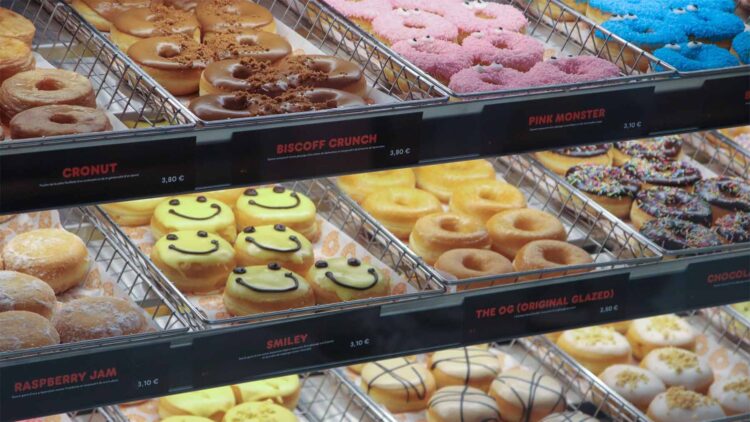Do you know what happens to the doughnuts that don’t sell at the end of the day? A 16-year-old Dunkin’ Donuts employee named Bryan Johnston went viral on TikTok after posting a video of over 300 doughnuts being thrown out in a U.S. location. “we throw away a lot of food,” he said. “This is just the routine we have to follow, but I can take some home if I want.”
Thousands of people showed their disapproval on social media asking why no donations were made. Turns out there’s a company policy that places a higher priority on disposal is what’s stopping it.
However, unless there are serious errors or deliberate misconduct, the Bill Emerson Good Samaritan Food Donation Act protects those who donate appropriate food.
From the counter to the bin: what you don’t see
The closing process is simple: if something didn’t sell, remove it and throw it away, even if it seems perfect. One response to the video of Bryan Johnston following Dunkin’s rule was, “Give it to homeless people.” As one user put it, “This is a waste.” “Give them away; people are struggling,” said another. “This hurt me for many reasons,” a third person added. The practice’s attempt to ensure freshness is the source of the conflict.
Bryan tried to get donations but was failed. “What my manager explained is that we, the employees, can take the donuts before throwing them away, but we must do it in a bag or box without the company logo.” he said, referring to the restriction on employees’ ability to take donuts before discarding them. Why? “That way, the business won’t be sued if we decide to give them away.”
Individual gestures are acceptable, but formal connections to shelters without permission are not.
Is throwing away doughnuts actually legal?
On social media, many people brought up the question: given the existence of the Bill Emerson Good Samaritan Food Donation Act, why not make a donation? The narrative describes what prevents it: fear of lawsuits and internal prudence. As mentionned before, sincere donations of suitable food are protected by the law, though they are not mandatory. As a result, each company’s policy determines the margin.
This leads to a paradox: there is a desire to help, but it is not fully expressed. Frustration increases as some food continues to be wasted. Bryan stated, “It still makes me anxious to see how much is wasted, and I’m willing to break the rules once in a while,” Bryan said. He even has a plan: “I definitely see myself giving away more food. My next plan is to give it to healthcare workers.”
From criticism to action
Doughnuts are clearly not the healthiest way to assist those in need. It’s high in sugar and fat. Nonetheless, those who are hungry and have no way to get food may find these sweet buns to be of great assistance. It makes you wonder why, if people are getting rid of something anyhow, they can’t just give it to someone who could use it for good. It affects our emotions to witness such a great deal of fresh food being thrown in the trash like it’s normal.
And this is only one example—how many other stores, restaurants, and supermarkets follow similar practices?
Bryan Johnston’s story was a viral moment, yes, but it does has a point. Change is fueled by empathy. A need, a law, and a will are all present. What’s lacking is the bridge, but American companies can start to build on that positive energy, enhance communication, and create safe donation channels for less waste.

